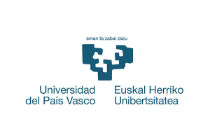Multilingualism

Multilingualism
Half of the world’s population speaks more than one language. However, we still do not understand how multilingualism changes our brain, how languages are represented in the brain, how the control system works to ensure that multilinguals do not mix languages while speaking, or how they switch easily between languages. Using advanced neuroimaging methods with unimodal and bimodal bilinguals and trilinguals, we investigate these issues to uncover the underlying brain mechanisms involved in managing two or more languages and learning a second language. This research will also provide major anchor points for education and society, pointing to the language learning conditions that maximize outcomes for children and adults acquiring a native and/or an additional language.
By testing bimodal bilinguals and trilinguals, we investigate whether the same or different neural networks are involved within and across modalities (signed and spoken language). We also explore the interplay between semantic, orthographic and phonological similarity across languages at the behavioural and neural levels, to provide insight into the functional and neuroanatomical mechanisms of second language processing and flexibility in spoken language processing (e.g., under adverse listening conditions).
We investigate the selectivity of language co-activation, during perception and production, in bilinguals under low versus high cognitive control demands. In addition, we investigate language switching (bilinguals alternating producing words in one language or the other) and code-switching (bilinguals perceiving sentences that contain language switches) in more ‘ecological’ settings (e.g., voluntary language switching) to understand how bilinguals exercise online control of their languages.
The impact of bilingualism on executive control is very controversial. Using eye-tracking, we are assessing perceptual flexibility and attentional processes in pre-verbal monolingual and bilingual infants, months before speech production is developed. This will reveal the earliest effects of bilingual exposure on perception and attention and enable us to track the development of processing strategies specific to early bilingualism. Then, we will explore the effects of early bilingualism on word learning, speech perception, brain-to-speech synchronization, reading skills, and reading strategies, in order to reveal the impact of early bilingualism on a large range of language processing abilities in young children and adults.
Using behavioural, eye-tracking and electrophysiological measures, we test whether higher sensitivity to within-category phonemic differences helps listeners learn novel speech sound categories; probe the neural basis for the well-documented finding that diversity in auditory input improves learning; and examine if the perception/production interplay in speech sound learning. In particular, we examine the impact of repeating/writing a novel sound-letter association on oral/written production, and the impact of L1 and L2 orthography on L2 sound learning. We expect to gain major insights into links between perception and production in speech sound learning, and the permeability of these processes. This research will have significant impact on theories and models of speech perception and production, as well as theories and applications for second language acquisition.









